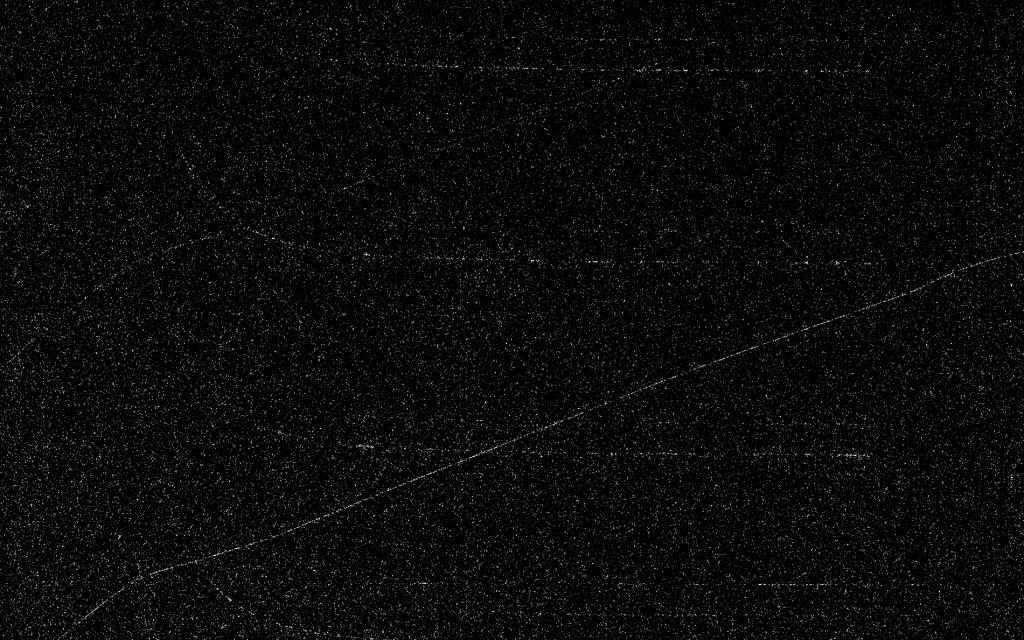I recall burning three or four weeks of a sabbatical getting Saccade.com on the air with Wordpress. So much tweaking…
Beacon Activity on 30m?
Well, I decided to try again to record some of the beacons that are on 30m. I recorded 1 hour of what sounds like white noise starting on July 5 around 18:30 UTC, and then ran it through an FFT and mapped out the frequency ranges that represent 10.14000 to 10.140200 Mhz. Here’s a processed version of the spectrogram:

Strictly speaking, only the lower half of the image is within the beacon band, but I haven’t actually calibrated my FT-817, so it might be off a few Hertz. The signals aren’t strong enough for me to identify any of them, but I might actually be getting something.
Here is the naked, unprocessed spectrogram.
Most people who do this kind of listening use Argo, written by I2PHD, and indeed I would except for one thing: no boxes run Microsoft Windows in my house. Well, that and I am kind of interested in the kind of DSP algorithms that enable us to do this kind of stuff. So, I tinker this stuff together for the Mac/Linux.
Addendum: I left the recorder going when I went out today. Around 0:00 UTC, I recorded the following near hour of the band between 10.140 and 10.140100 Hz. Whoohoo! My first real beacon. Not sure who it is yet though.

Addendum2: Hmmm. Figured it out! It’s WB3ANQ I think. His grid in FM19rc is almost 2450 miles away, using a power level of only 200mw!
Hello Knights, I have joined in on 30 meters 10.140.095 to 10.140.100 Mhz QPS ref. 200 mW with my SNAKE format /\/\/\/\ 30 second period as of 1900 UTC -- Larry Putman WB3ANQ Pasadena, Maryland FM19rc
Comment from Vince
Time 7/6/2008 at 7:57 pm
For Linux, you could try Linrad… It’s a pretty neat program…
http://www.nitehawk.com/sm5bsz/linuxdsp/linrad.htm
73’s
Vince N9VN